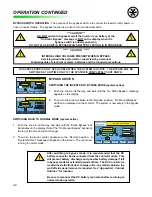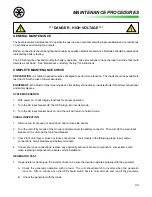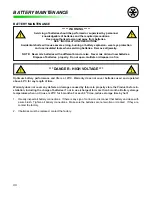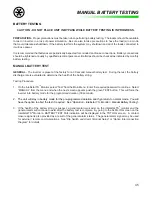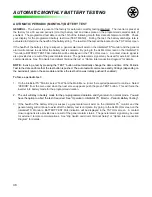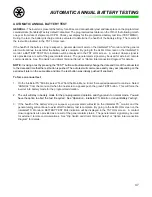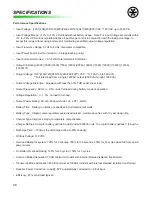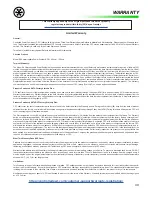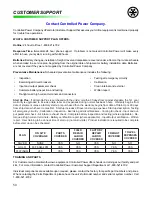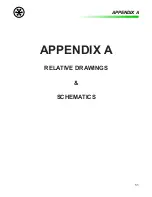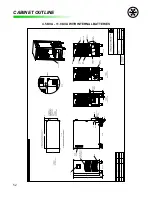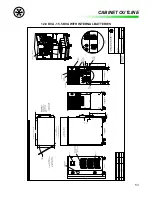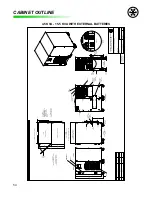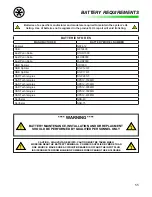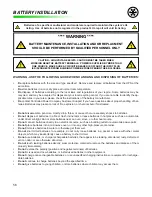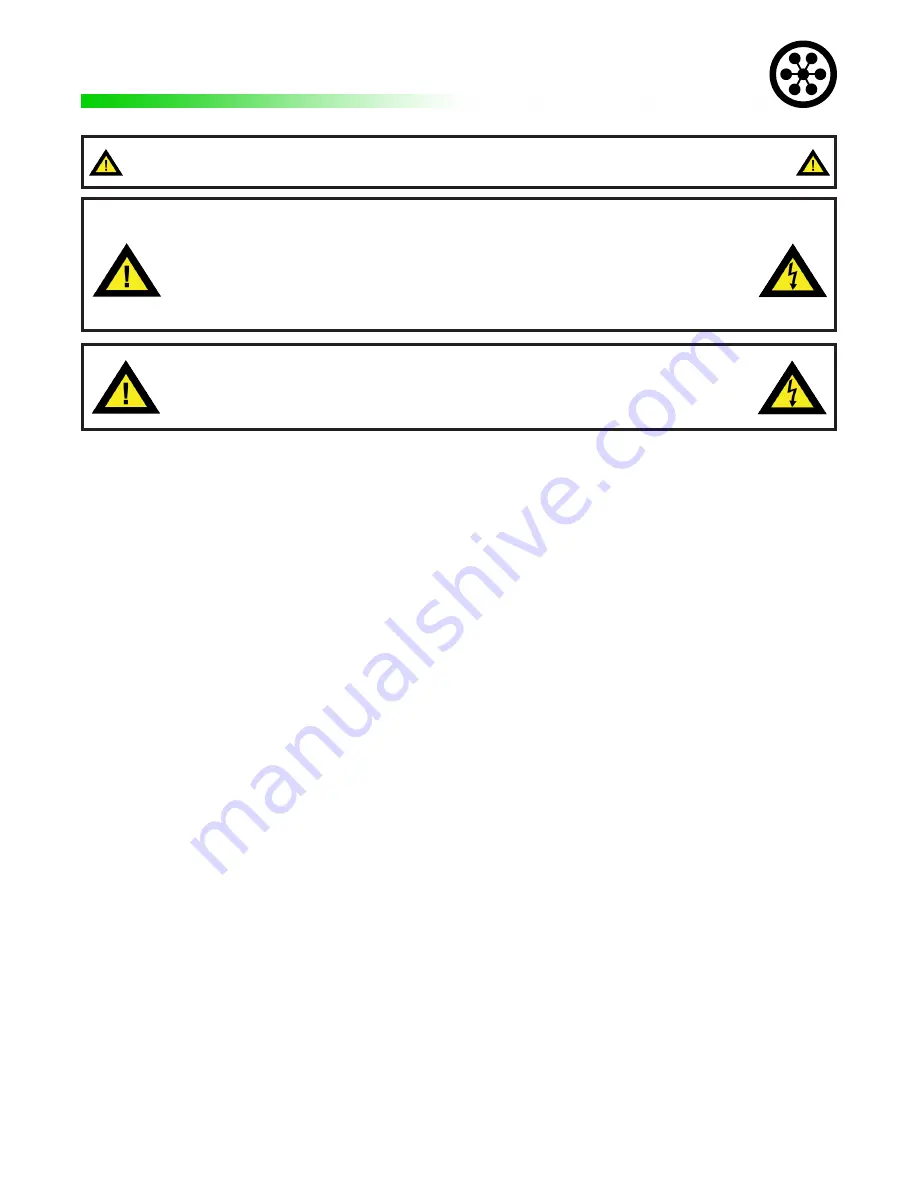
56
Batteries of a specific manufacturer and model are required to maintain the system’s UL
listing. Use of batteries not recognized in the product’s UL report will void its listing.
CAUTION - HIGH VOLTAGE EXISTS, CAUTION MUST BE TAKEN WHEN
WORKING NEAR THE BATTERY TERMINALS. POWER IS SUPPLIED BY MORE THAN
ONE SOURCE. MAKE SURE AC CIRCUIT BREAKER IS OFF AND THE INPUT PLUG
IS DISCONNECTED FROM BUILDING POWER BEFORE OPENING THE ENCLOSURE.
**** WARNING ****
BATTERY MAINTENANCE, INSTALLATION AND OR REPLACMENT
SHOULD BE PERFORMED BY QUALIFIED PERSONNEL ONLY
WARNING - USE THE FOLLOWING GUIDE WHEN HANDLING AND DISPOSING OF BATTERIES:
• Do
replace batteries with the size and type specified. Remove and replace all batteries from the UPS at the
same time.
• Do
store batteries in a cool, dry place at normal room temperature.
• Do
dispose of batteries according to the local laws and regulations of your region. Some batteries may be
recycled, and may be accepted for disposal at your local recycling center. If you are not able to identify the ap-
plicable rules in your area, please check the instructions of the battery manufacturer.
• Do
contact Controlled Power Company Customer Support if you have questions about proper handling of bat-
teries. Batteries may present a risk of fire, explosion, or chemical burn if mistreated.
• Do not
disassemble, puncture, modify, drop, throw, or cause other unnecessary shocks to batteries.
• Do not
dispose of batteries in a fire or trash incinerator, or leave batteries in hot places such as a automobile
under direct sunlight. Do not store batteries near an oven, stove, or other heat source.
• Do not
connect batteries directly to an electrical source, such as a building outlet or automobile power-point.
• Do not
place batteries into a microwave oven, or into any other high-pressure container.
• Do not
immerse batteries in water or otherwise get them wet.
• Do not
short circuit batteries; for example, do not carry loose batteries in a pocket or purse with other metal
objects, which may inadvertently cause a battery to short circuit.
• Do not
use batteries, or charge rechargeable batteries, that appear to be leaking, discolored, rusty, deformed;
emit an odor; or are otherwise abnormal.
• Do not
touch leaking batteries directly; wear protective material to remove the batteries and dispose of them
properly immediately.
• Do not
reverse the polarity (positive and negative terminals) of batteries.
• Do not
mix used and new batteries, or install used batteries in other equipment.
• Do not
charge non-rechargeable batteries, or use unspecified charging instructions or equipment for recharge
-
able batteries.
• Do not
continue to charge batteries beyond the specified time.
• Do not
give batteries to young children, or store batteries where children may access them.
BATTERY INSTALLATION
Содержание MODEL ES
Страница 51: ...51 APPENDIX A RELATIVE DRAWINGS SCHEMATICS APPENDIX A ...
Страница 57: ...57 NOTES ...

